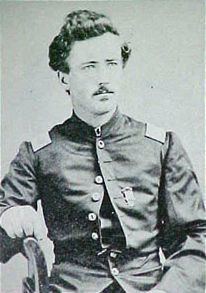Years of service 1861 - 1866 | Name William Bensinger | |
 | ||
Born January 14, 1840Waynesburg, Ohio ( 1840-01-14 ) Unit Company G, 21st Ohio Infantry | ||
Continuous Treatment to Address Residual Disease in Multiple Myeloma
William Bensinger (January 14, 1840 to December 19, 1918) was an American soldier who fought for the Union in the American Civil War. On March 25, 1863, he was the second person given the country's highest award for bravery during combat, the Medal of Honor, for his actions during the Great Locomotive Chase in Georgia in April 1862.
Contents
- Continuous Treatment to Address Residual Disease in Multiple Myeloma
- Multiple Myeloma Should everyone receive an autologous transplant
- Biography
- Medal of Honor citation
- References
Multiple Myeloma - Should everyone receive an autologous transplant?
Biography
Bensinger was born on January 14, 1840 in Waynesburg, Ohio and enlisted into the 21st Ohio Infantry at Hancock County, Ohio. He was among a group of Ohio men (19 soldiers and 2 civilians) who volunteered for a secret mission to disrupt Confederate communication. In April, this group led by James J. Andrews, which later came to be called Andrews' Raiders, boarded a train in Georgia. On April 12, after it stopped in Big Shanty, they commandeered its engine and three boxcars and headed toward Chattanooga, Tennessee. Pursued by the Confederates, they destroyed track and telegraph lines along the way. They never made it to Chattanooga and abandoned the engine, before all were captured within a week. Some were hanged and some, including Bensinger, were taken to prison camp. He eventually escaped and arrived in Washington, D.C., later moving to McComb, Ohio, where he died on December 19, 1918.
Medal of Honor citation
One of the 19 of 22 men (including 2 civilians) who, by direction of Gen. Mitchell (or Buell), penetrated nearly 200 miles south into enemy territory and captured a railroad train at Big Shanty, Ga., in an attempt to destroy the bridges and track between Chattanooga and Atlanta.
